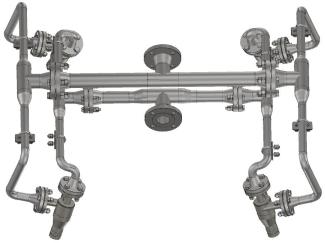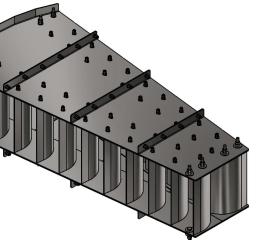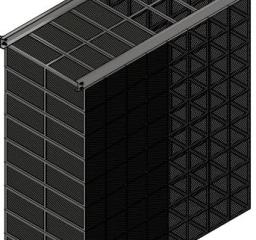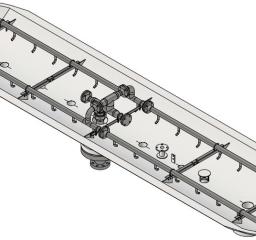Superior Solids Extraction Cyclone System
Efficiently removing solids from separators
A challenge in certain facilities is the production of solids along with the produced fluids. The reason for this may be attributable to the type of reservoir, as well as increased produced water production due to the aging of the field(s). Solids pose an issue in a production facility as they keep filling up the separators and can lead to a variety of additional issues downstream thereof. These may include damage to lines and equipment and malperformance of valves and instruments. Consequently, this may lead to process safety issues, most certainly an increased maintenance cost, as well as loss of production. It is therefore imperative to manage the solids presence in the process/facility and regularly remove the solids from the separators.
Separation of the phases
The separation of the solids from the liquid phase(s), is driven by the density difference and the particle size(s). In most separators, this takes place as the result of the gravity forces acting. Depending on the particle size distribution and the fluid flow distribution in the separator, the solids will settle from inlet to outlet. The best achievable settling performance will be achieved when the liquid flow is most evenly distributed over the wetted cross-sectional area of the vessel. As the solids accumulate, they also may leave the separator again through the liquid outlet nozzle(s) causing the downstream issues described above.
Solids removal
Therefore, once the solids have settled in the separator, they need to be removed frequently, otherwise they will accumulate to undesirable levels, impacting other separations taking place in the same volume. For that purpose, the Superior Solids Extraction Cyclone System can be employed.
The Superior Solids Extraction Cyclone System operates on the principle of a certain water flow at a certain pressure being fed to the cyclone system, which then causes the solids to fluidise around each cyclone. The system is designed such that the solids extraction efficiency is optimised. It means that the system won’t remove all the solids from the separator, but it manages the level of solids that remain in the separator from large accumulations down to an acceptable level.
The pressure balance over the system causes the slurry to leave the separator separately through the discharge piping of the extraction cyclone system to the external solids handling system. To limit the water flow required, the system can be designed in multiple sections that can be operated in series.
| Specification Title | Specification Description |
|---|---|
|
Available sizes
|
Tailor-made to be compatible with vessel size and fluidising and motion water availability.
|
|
MOC (SS)
|
304, 316, 321, 904
|
|
MOC (Duplex)
|
S31803, S32205, S32750
|
|
MOC (Alloys)
|
C276, 400, 625, 825
|
|
MOC (Other)
|
Other materials of construction upon request.
|
Reviews
Sign up or log in to your explorer or platform subscription to get access to the reviews written about this technology.
The Technology Readiness Level (TRL) indicates the maturity level of novel technologies. Learn more about the TRL scale used by us.
[9/9]




